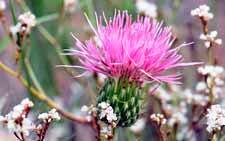Hymenothrix wislizeni, Trans-Pecos Thimblehead
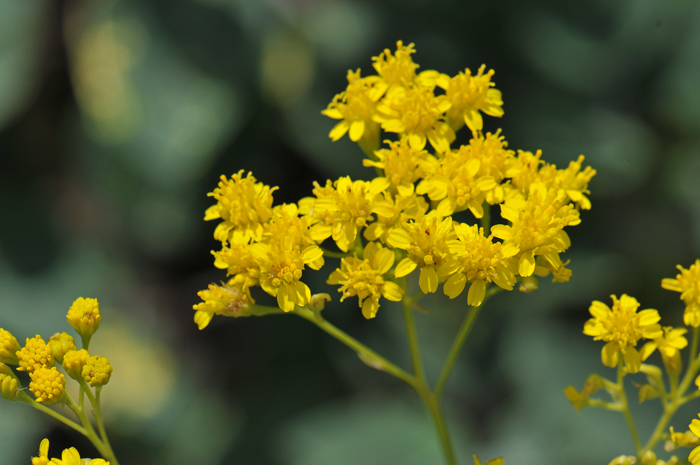
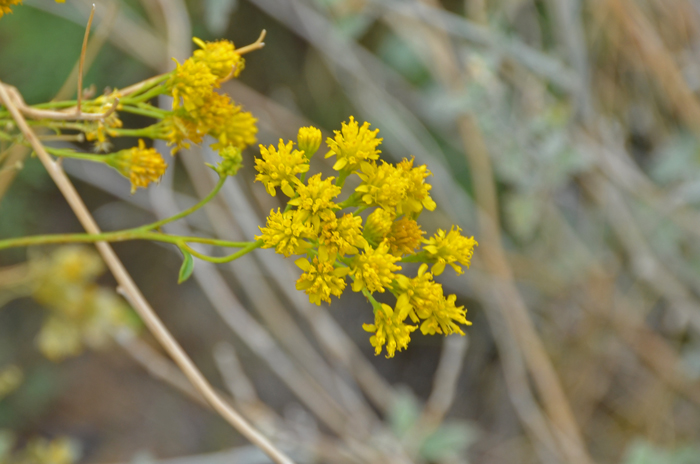
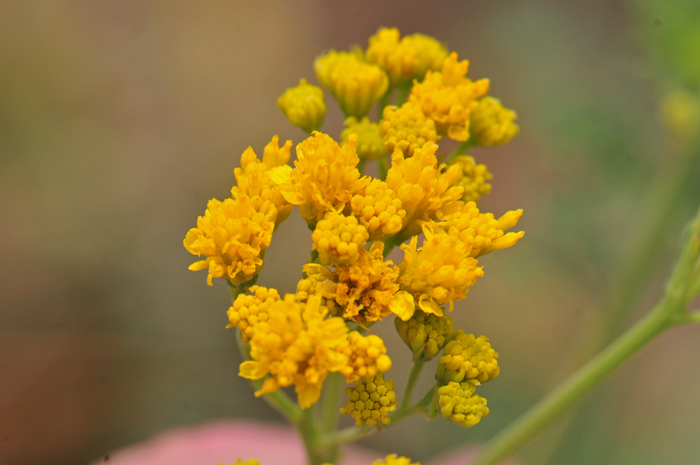
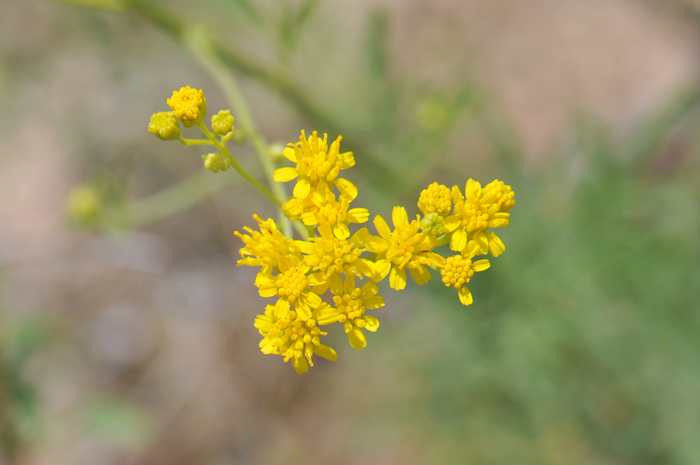
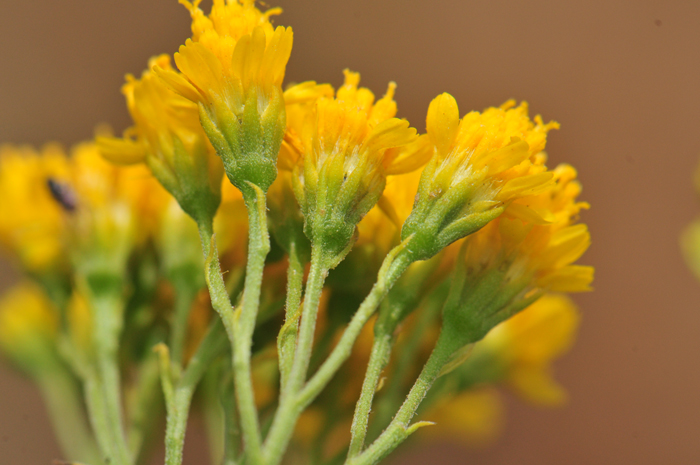
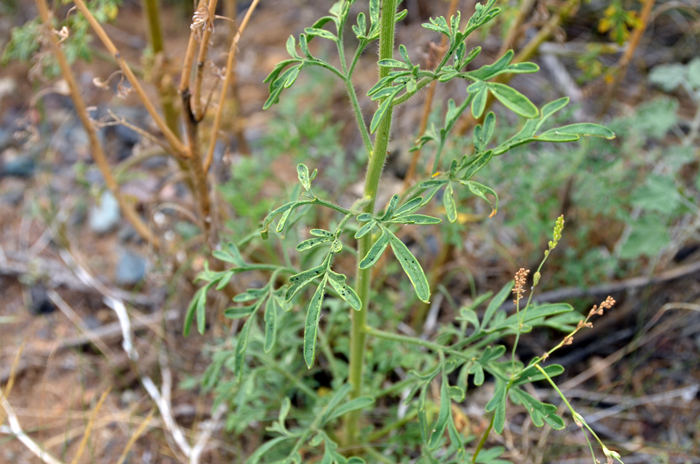
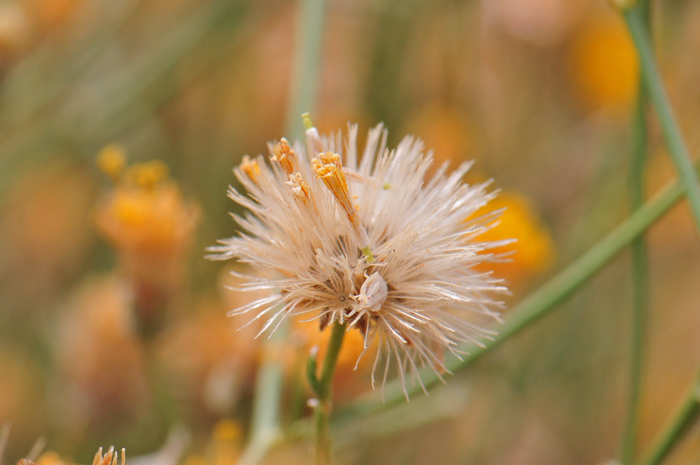
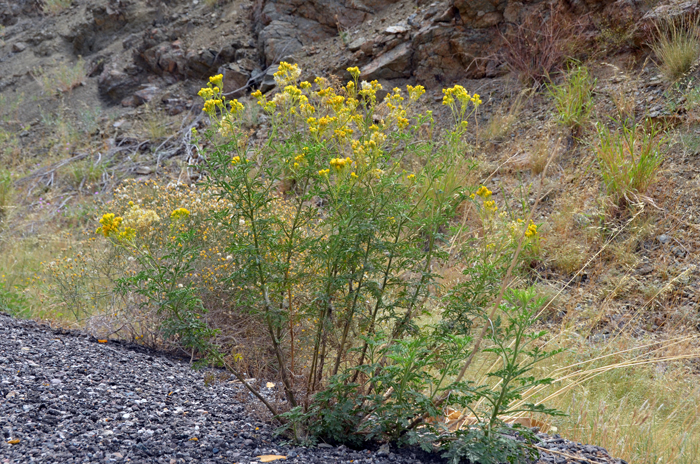
Scientific Name: Hymenothrix wislizeni
Common Name: Trans-Pecos Thimblehead
Also Called: TransPecos Thimblehead
Family: Asteraceae, Sunflower Family
Synonyms: ()
Status: Native
Duration: Annual or biennial.
Size: 2 to 3 feet (61-91 cm) tall more or less.
Growth Form: Forb/herb; multiple upright slender green stems, branching near the top.
Leaves: Green; majority of the leaves at the base of the plant; leaves are divided (dissected) into 3 linear segments or linear lobes (ternate); leaf edges or margins slightly rolled back (revolute).
Flower Color: Yellow; the yellow flowers are in terminal clusters; flower heads have both ray (8 to 12 yellow 3-toothed) and disk (15 to 30 yellow or cream) florets; bracts (phyllaries) surrounding flower heads linear; in the middle of the flowers are yellow anthers; fruit is a cypsela.
Flowering Season: June or July to October, November and December
Elevation: 2,000 to 5,500 feet (610-1,676 m).
Habitat Preferences: Sunny open areas, plains, mesas, along washes, roadsides, sand, gravelly and calcareous soils.
Recorded Range: Relatively rare in the United States where it is found only in AZ, NM and TX. It is also native in Baja California and northern and central Mexico. In the southwestern United States it is found mostly in the central and southern parts of Arizona; there are a few disjunct populations in New Mexico and Texas is poorly represented with only a few specimens recorded in the far west.
North America & US County Distribution Map for Trans-Pecos Thimblehead, Hymenothrix wislizeni.
North America species range map for Trans-Pecos Thimblehead, Hymenothrix wislizeni:
North American range map courtesy of Virginia Tech, Dept. of Forest Resources & Environmental Conservation
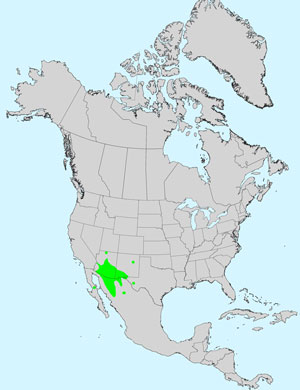
U.S. Weed Information: Unknown
Invasive/Noxious Weed Information: Unknown
Wetland Indicator: Unknown
Threatened/Endangered Information: Unknown
The genus Hymenothrix was published by Asa Gray, (1810-1888), in 1849.
In the Southwestern United States: Arizona has 3 species of Hymenothrix, California, New Mexico and Texas each have 2 species, Nevada has 1 species and Utah has 0 species. Data approximate and subject to revision.
Comments: Trans-Pecos Thimblehead is similar in appearance to both Wright’s Thimblehead, Hymenothrix wrightii and Loomis' Thimblehead, Hymenothrix loomisii. The most obvious differences are in the flowers, both Wright’s and Loomis’ Thimblehead flowers are discoid only without the ray flowers found on Trans-Pecos Thimblehead.
Other differences are in the flower colors, Wright’s Thimblehead flowers have white or pinkish corollas and pinkish anthers and Loomis' Thimblehead has cream or yellow flowers but again, they lack the ray flowers found only on Trans-Pecos Thimblehead.
Fruit photo above shows cypsela seed and pappi.
The genus Hymenothrix was published by Asa Gray, (1810-1888), in 1849.
The species epithet “wislizeni” (wislizen'i:) is named in honor of Frederick Adolf Wislizenus, (1810-1889).

